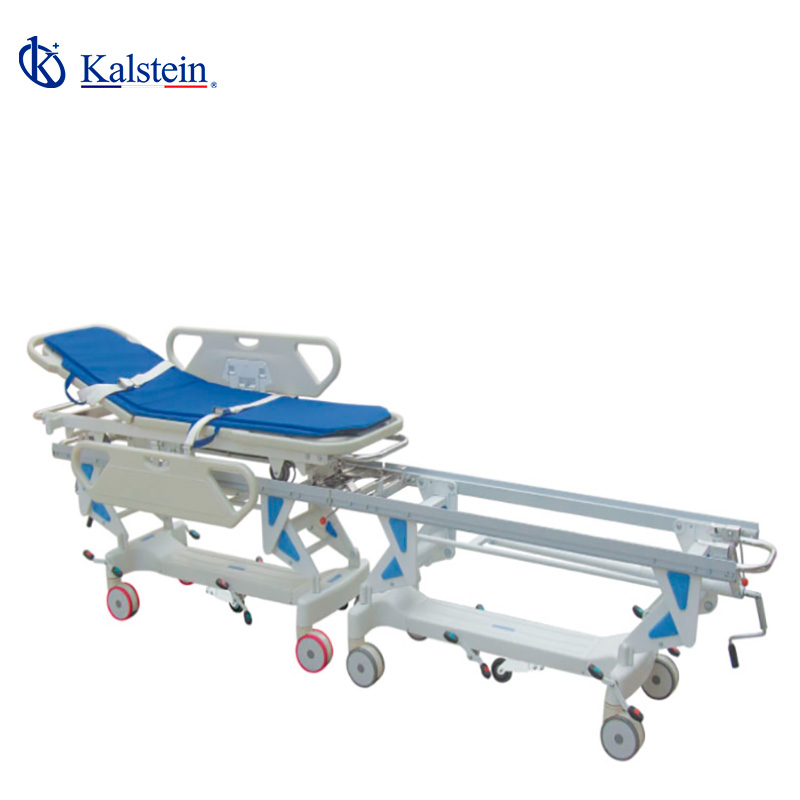In the dynamic world of emergency medicine, the folding emergency stretcher has emerged as a crucial device. With constant advances in technology and design, these stretchers not only align with the latest trends in medical equipment but also elevate standards of care and safety in critical situations.
This article explores the latest innovations in the folding emergency stretcher, highlighting how they integrate with developments in medical devices and their positive impact on pre-hospital care.
Are you yearning for top-tier medical equipment, ready to enhance the efficiency of your laboratory? Visit https://kalstein.de/category-product/medical-line/medical-transfer-stretcher/ to explore our high-end catalog, packed with the best finds at the most competitive prices. Excellence marks our brand, we innovate and manufacture high-precision equipment, both reliable and durable to meet your needs. Why wait? Make your quick and secure online purchase, take the leap towards the future of medical technology today. https://kalstein.de/
Advances in Materials and Construction
Modern folding emergency stretchers have adopted advanced materials that significantly enhance their durability and weight. Previously, these stretchers were known for their considerable weight, making them difficult to handle in emergency situations. However, with the use of lightweight aluminum alloys and high-strength polymers, current stretchers are lighter and more robust, facilitating their transport and quick deployment in the field.
In addition to new materials, construction techniques have advanced. The implementation of reinforced joints and improved folding mechanisms ensures that the stretcher can support heavy loads without compromising its structural integrity. These developments not only enhance patient safety but also reduce the risk of injury to healthcare professionals handling them.
Ergonomics and Design for Patient Comfort
Another notable trend in folding emergency stretchers is the focus on ergonomics and patient comfort. New stretchers are designed with padded, adaptable surfaces that conform to the patient’s anatomy, providing greater comfort during transport. This ergonomic design also helps minimize the risk of additional injuries, such as pressure ulcers, during prolonged periods of immobilization.
The design of stretchers has also improved in terms of accessibility and handling. Restraint devices and safety belts are designed to be adjustable and easy to use, allowing for quick and secure immobilization of the patient. Additionally, modern stretchers are equipped with features like adjustable headrests and side supports, further enhancing patient comfort and safety during transport.
Integration of Technology and Functionality
Technology has played a crucial role in the evolution of folding emergency stretchers. Today, many of these stretchers are equipped with sensors and monitoring systems that can track vital signs in real time. This technological integration allows paramedics and emergency personnel to obtain critical data about the patient’s condition while in transit, improving decision-making and care outcomes.
Moreover, connectivity with other medical devices is a growing trend. Modern stretchers can synchronize with remote monitoring equipment and patient management systems, facilitating a seamless transfer of information when the patient arrives at the hospital. This interoperability not only enhances the efficiency of the medical care process but also ensures that healthcare professionals have access to accurate and up-to-date patient information.
Portability and Optimized Storage
One of the greatest advantages of folding emergency stretchers is their portability. Current designs focus on maximizing space efficiency without sacrificing functionality. Folding stretchers can be compacted to minimal sizes, which is essential for storage in ambulances and other emergency vehicles where space is limited.
The development of intuitive folding mechanisms has made the use of these stretchers easier, allowing emergency professionals to quickly deploy and store them without extensive training. Additionally, improved ergonomic wheels and handles ensure that stretchers can be easily maneuvered over rough terrain, increasing their versatility in various emergency situations.
Sustainability and Eco-Friendly Materials
Sustainability is a growing trend across all fields, and the design of folding emergency stretchers is no exception. Manufacturers are increasingly committed to producing eco-friendly medical devices, using recyclable materials and sustainable manufacturing processes. This trend not only reduces the environmental impact of medical equipment production but also responds to the growing demand for responsible business practices.
The use of eco-friendly materials, such as biodegradable plastics and recyclable metals, does not compromise the quality or durability of the stretchers. In fact, many of these materials offer additional benefits, such as greater corrosion resistance and extended lifespan, reducing the need for frequent replacements and consequently, waste.
Innovations in Training and Education
Finally, innovations in the training and education of emergency professionals are essential to maximizing the effective use of folding stretchers. Training programs have evolved to include advanced simulations and hands-on training with the latest stretchers available on the market. This comprehensive training ensures that paramedics and emergency technicians are well-prepared to use these tools efficiently and safely.
Virtual and augmented reality are also being incorporated into training, offering professionals the opportunity to practice in realistic virtual environments before facing real-life emergency situations. These innovative training methods not only improve technical competence but also increase professionals’ confidence when using folding emergency stretchers in the field.
In summary, folding emergency stretchers have undergone significant advancements in terms of materials, ergonomic design, technological integration, portability, sustainability, and training. These developments align stretchers with the latest trends in medical equipment, improving the efficiency and effectiveness of emergency care. By continuing to adopt these innovations, the medical industry can further enhance the quality of care provided to patients in critical situations.

